3 Pigs + 1 Wolf = Math Play
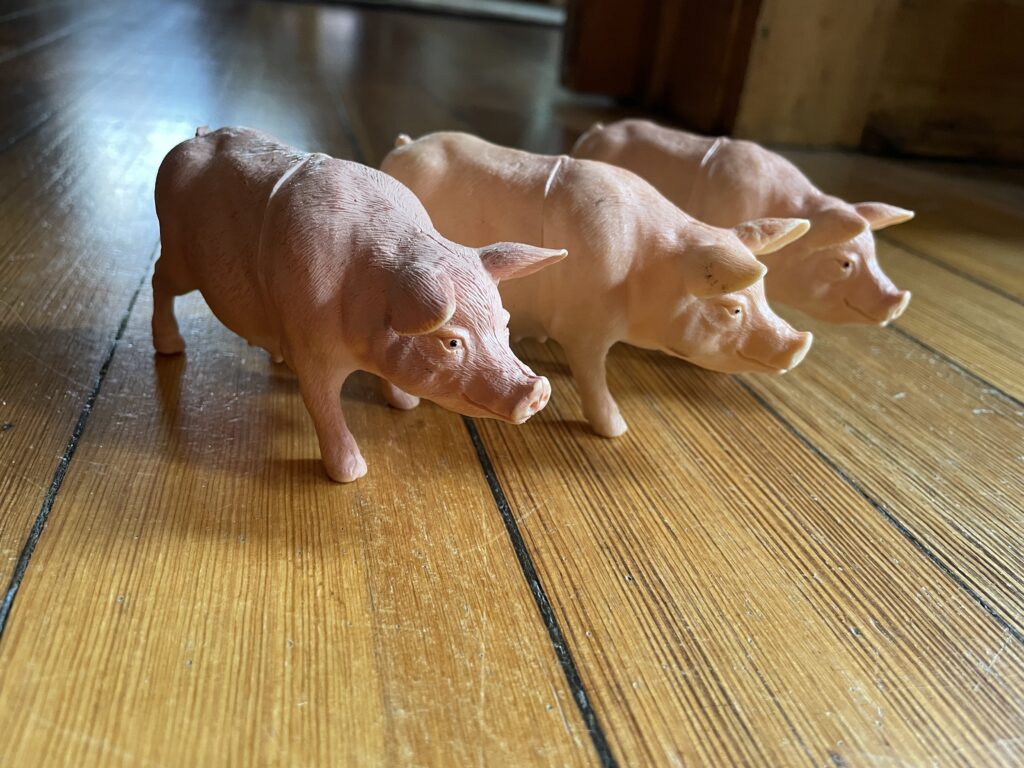
“I think that wolf should go in this row, with the pigs,” protests five-year-old Harper.
“What? Why? He’s a wolf, not a pig!” insists Harrison.
“And he’s not pink!” chimes in three-year-old Evelyn.
“The wolf will go with the pigs in this row for ‘Stories,'” explains Harper. “You know, like in that book, The Three Little Pigs!”
I wander over to see what this deep discussion is all about. Wow! The older preschoolers are lining up and labeling groups of animals from the basket. This is child-led learning at its finest!
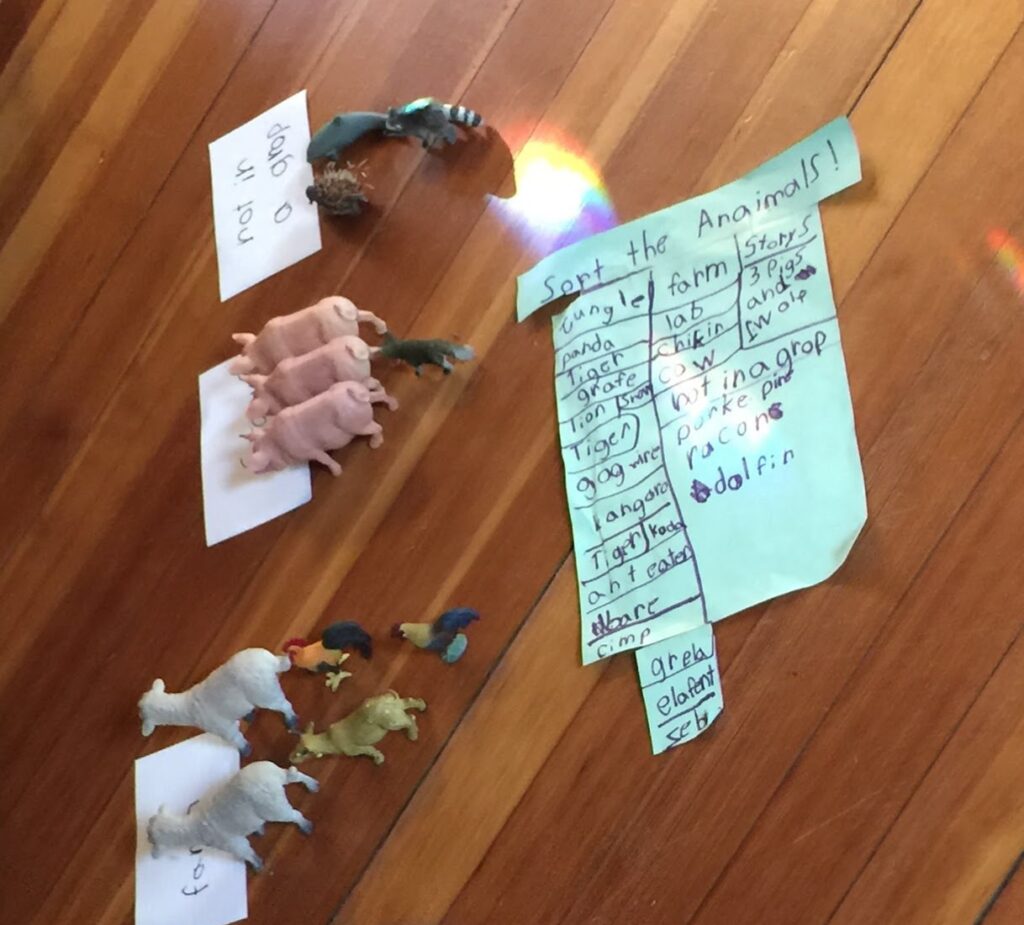
“Oh yeah! That makes sense!” Miguel agrees.
But Evelyn seems puzzled by their reasoning. Math skills such as sorting and patterning are developed in a sequential order—and Evelyn’s early math skills are not as developed as those of her older friends.
At all ages, children classify objects intuitively to make sense of the world. Two-week-old infants can already distinguish objects that they suck on from other objects.
By the age of two, toddlers can form sets of similar objects. By preschool, children can sort and categorize objects according to a given attribute.
When children engage in classification, they are sorting objects according to some established criteria. For Harper, it makes sense to classify the wolf with the pigs. It also makes sense to Miguel when Harper explains his reasoning.
I look at the list that Harper has created. I chuckle at his phonetic spelling as I read the three categories that he has printed across the top of a sheet of green paper: “Jungle, Farm and Stories.”
When learning how to classify objects, children first learn how to identify and name the attributes that the items in a group will have in common. Then they move on to identifying the attributes that will exclude items from a group.
See Harper’s list in the bottom right corner? It reads, “Not in a group.”
Wow! This is math! This is early literacy! All while playing and having fun!

Remember back in first grade when we were learning about sets and we had to circle the apples, but not the oranges, on our math worksheets? Our morning of animal sorting is a similar exercise, but the children are establishing the rules.
Hands-on play will beat a worksheet any day of the week. What sticks to the hands, sticks to the brain.
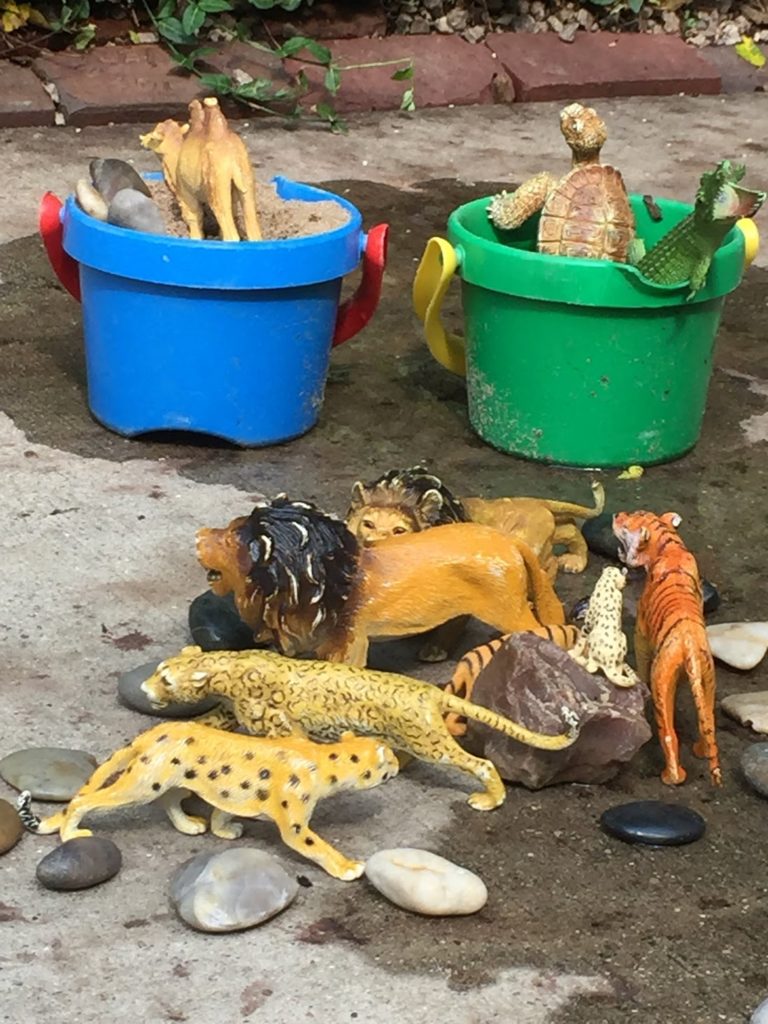
When children sort objects in their environment, they are using their analytical thinking skills, which are the lifeblood of mathematics. When children engage in organizing activities, it helps them make sense of their world.
Sorting allows children to determine where they think an object belongs and why they think it belongs there. Often, objects will be reclassified from one day to the next. The wolf may be classified as a “Story Animal” today and as a “Forest Animal” tomorrow!
A 2015 research study showed that young children were more creative, more interactive and more verbal when they were playing with sets of animal figures than with other toys (Trawick–Smith et al. 2015). These findings were consistent regardless of gender or background.
The takeaway? Every classroom needs a basket of animal figures!
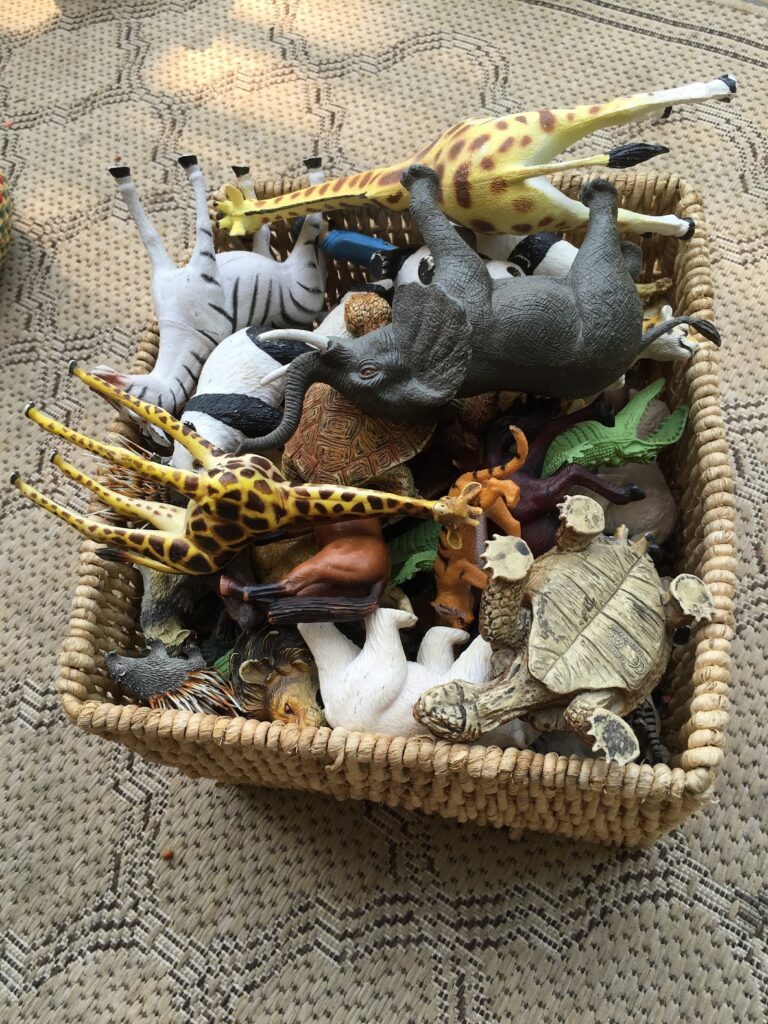
What’s so great about a basket full of plastic animals? It doesn’t come with a rule book!
When children play with toys such as small animals, people or vehicles, they create elaborate make-believe scenarios and engage in rich discussions about those scenarios. Perhaps best of all, they learn to play cooperatively with their friends.
As educators, we know that children love to play with baskets of plastic animals. Now we have research to prove what we’ve known all along: that open-ended, imaginative play will naturally lead to sorting and classifying—and you’ll be checking off those early math learning standards in no time!
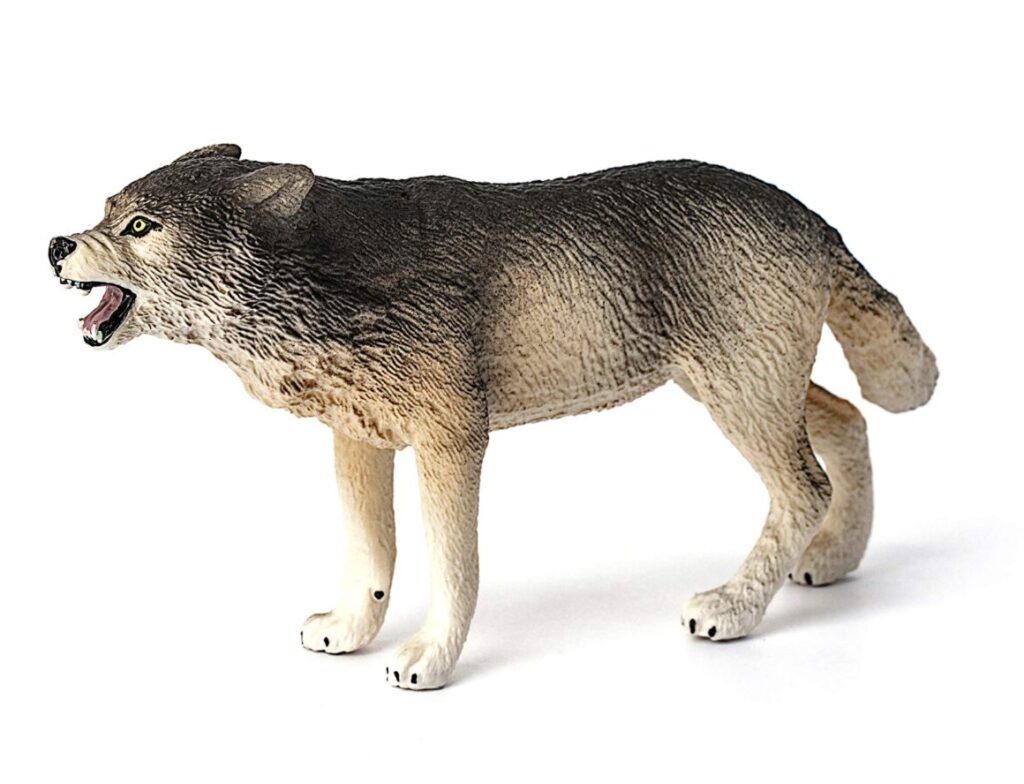
Looking for an Early Math Counts lesson plan that involves sorting and classifying? Check out Cereal Sorting!
I think its really neat that children learn to group animals and other objects at such a young age based on color, where they are found, and size.
I think is a very good Idea the used of different animals as a based to represent the mathematic problem
It’s always awesome to watch children learn on their own, watching what they can do, how they can sort based on the different characteristics. This is a great way to teach children.
Kids love animals and it is something most children have some experience with making the lesson more meaningful
Awesome way to group animals
I agree that teaches them different ways to count or sort
I have always loved, “one of these things is not like the other”, activities with older children. I especially like when prek children explain their reasoning as to why they sorted objects they way they did.
Animals are always a good choice, because all kids love them. There is so many different ways of sorting them by size, types, colors.
This is something that can easily be done with a variety of items which makes it versatile for every classroom budget
It is so neat to watch children sort things by color, size, or types. But to also be able to put things together and be able to match for example the three pigs and the wolf together and know that those four animals are a story.
Excellent, I love math, and I am sure children will love it too.
It’s always interesting to see what direction children will take with classifying. It definitely shows a higher level of understanding when they can start classifying things according to attributes other than color, size or shape.
Sorting animals is such a good way for children not only learn math but also animals at the same time.
I agree, this is such a great way to help the child that likes animals learn about them as well as counting them
Great lesson
I never thought about how important it is to have farm animals in my program! But it is a great idea. Children really like animals and they are relatable. The children learn about animals sounds, colors, textures and smells. And all of the is useful in everyday life.
I think most children enjoy this type of activity. It really gets the brain thinking
This is another good way to demonstrate how to make patterns and to separate things
Great
children love animals, using them in patterns and groups will also help them understand which are different as well for the future, a good way and a good use for patterns.
The concept of sorting the animals by story creates an individualized set that will create a different chart than setting the animals by type or size.
I loved the children’s different ideas in their sorting. I liked the environment sorting for the animals.
Sorting, patterning and sequencing is good practice for young math learners. I use it with my young ones in the form of games.
Awesome